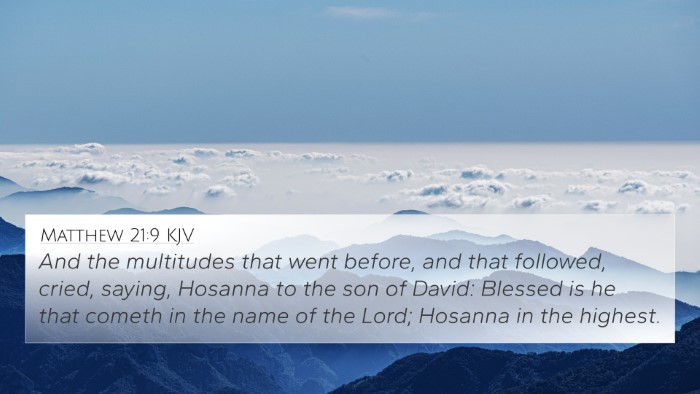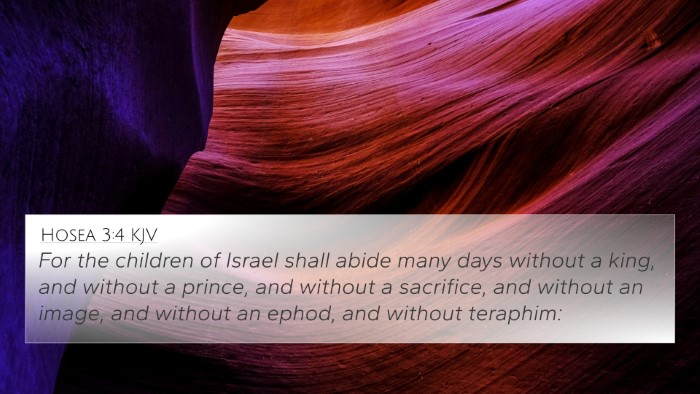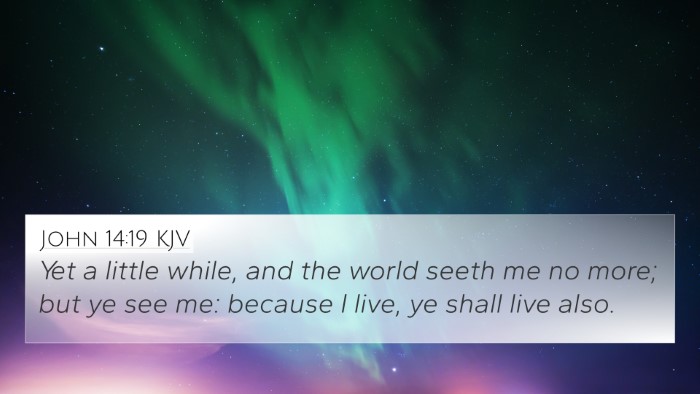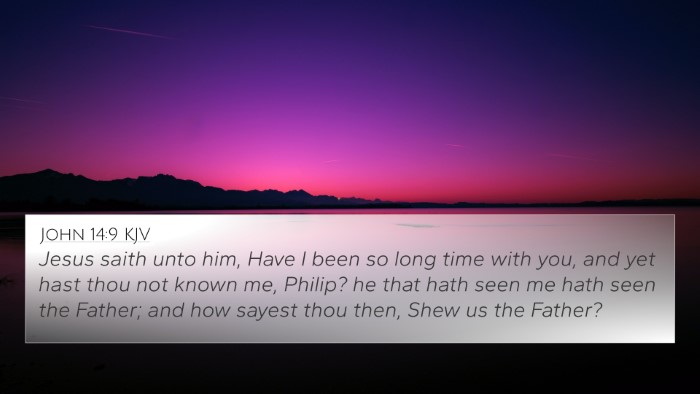Understanding Matthew 23:39
Bible Verse: Matthew 23:39 - "For I say unto you, Ye shall not see me henceforth, till ye shall say, Blessed is he that cometh in the name of the Lord."
Summary of Interpretation
Matthew 23:39 signifies a pivotal moment in Jesus' teaching, reflecting on the rejection He faced from the leaders of Israel. This scripture sets the stage for His impending departure and the future expectation of His return, filled with hope and recognition by the people.
Commentary Insights
-
Matthew Henry:
Henry explains that this verse emphasizes the nation of Israel's blindness to recognize Jesus as the Messiah. Their acknowledgment is delayed until the Second Coming when they will finally declare His praise.
-
Albert Barnes:
Barnes highlights that this verse establishes a significant prophetic declaration from Jesus. The phrase "till ye shall say" indicates a future moment when Israel will recognize and welcome Jesus as the Messiah, fulfilling Old Testament prophecies.
-
Adam Clarke:
Clarke notes the emotional and theological depth of this verse. It reveals both judgment and hope—the judgment of the current generation for their unbelief and the promise of future redemption, portrayed in their eventual restoration.
Cross-References Related to Matthew 23:39
- Psalms 118:26: "Blessed is he that cometh in the name of the Lord: we have blessed you out of the house of the Lord."
- Luke 13:35: "Behold, your house is left unto you desolate: and verily I say unto you, Ye shall not see me, until the time come when ye shall say, Blessed is he that cometh in the name of the Lord."
- Zechariah 12:10: "And I will pour upon the house of David, and upon the inhabitants of Jerusalem, the spirit of grace and of supplications: and they shall look upon me whom they have pierced, and they shall mourn for him, as one mourneth for his only son."
- Isaiah 53:3: "He is despised and rejected of men; a man of sorrows, and acquainted with grief: and we hid as it were our faces from him; he was despised, and we esteemed him not."
- Romans 11:26: "And so all Israel shall be saved: as it is written, There shall come out of Sion the Deliverer, and shall turn away ungodliness from Jacob."
- Revelation 1:7: "Behold, he cometh with clouds; and every eye shall see him, and they also which pierced him: and all kindreds of the earth shall wail because of him. Even so, Amen."
- Matthew 24:30: "And then shall appear the sign of the Son of man in heaven: and then shall all the tribes of the earth mourn, and they shall see the Son of man coming in the clouds of heaven with power and great glory."
Thematic Connections
The themes contained within Matthew 23:39 echo throughout both the Old and New Testaments, showcasing the prophetic nature of Jesus’ ministry and the anticipated recognition of His lordship. This verse serves as a bridge between the expectations set forth in the Old Testament and their fulfillment in the New Testament.
Tools for Bible Cross-Referencing
To facilitate a deeper understanding of Biblical texts, tools such as a Bible concordance, Bible cross-reference guide, and various Bible reference resources can be immensely helpful. These resources aid in cross-referencing Bible verses and establishing connections between biblical texts.
How to Use Bible Cross-References
Engaging in cross-reference Bible study not only enriches one's comprehension of individual scriptures but also unveils the intricate inter-Biblical dialogue that shapes theological understanding. Here are some tips on effective use of Bible cross-references:
- Identify key themes in the verse you are studying.
- Utilize a Bible concordance to locate other verses that speak to the same themes.
- Compare differing accounts of similar events, especially in the Gospels.
- Look for prophetic verses in the Old Testament that find their fulfillment in the New Testament.
Conclusion
Matthew 23:39 encapsulates rich theological significance and prophetic insight into the recognition of Jesus Christ. By employing cross-referencing methods, individuals can discover a deeper understanding and appreciation for the intricate web of scripture that binds the Bible together.

















